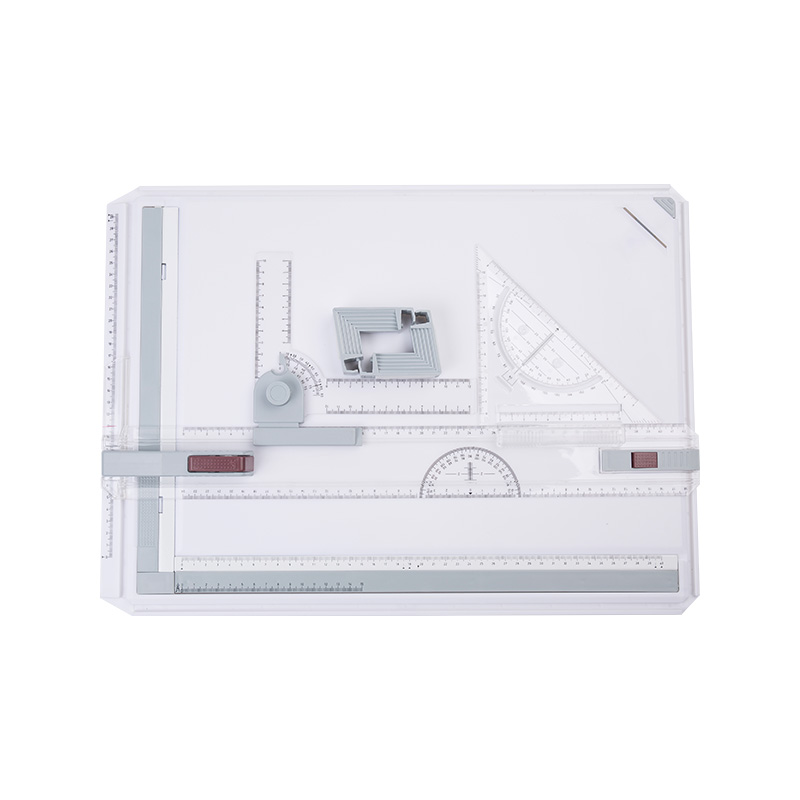Clips or Rubber Bands: A3 drawing boards often employ meticulously designed clips or robust rubber bands strategically positioned along the edges of the board. These components are crafted with precision to exert just the right amount of pressure on the paper, ensuring a secure hold without damaging its edges. The clips typically feature ergonomic designs that allow for effortless attachment and removal of the paper, facilitating smooth transitions between drawing tasks. Likewise, the rubber bands are engineered from durable materials with optimal elasticity, providing reliable tension to keep the paper flat and stable throughout the drawing process. This meticulous attention to detail ensures that users can confidently work on their projects without concerns about paper slippage or misalignment.
Parallel Rulers: Many A3 drawing boards boast adjustable parallel rulers, a sophisticated feature that enhances usability and precision. These rulers are meticulously calibrated to align perfectly with the edges of the paper, establishing a firm boundary that prevents any lateral movement. The adjustable nature of the parallel rulers allows users to customize the fit according to their specific drawing requirements, ensuring consistent alignment and stability across different projects. Whether working on technical diagrams or artistic compositions, users can rely on the parallel rulers to maintain paper stability with unparalleled accuracy, enhancing overall workflow efficiency and output quality.
Built-in Tilt Mechanisms: Drawing boards equipped with adjustable tilt angles often incorporate robust tilt mechanisms engineered to withstand rigorous use. These mechanisms are meticulously engineered with precision components that enable smooth adjustments while providing reliable locking capabilities to secure the board in the desired position. Advanced friction controls further enhance stability, ensuring that the drawing surface remains steadfast even during prolonged drawing sessions. By offering a customizable and ergonomic drawing experience, these tilt mechanisms empower users to work comfortably for extended periods without compromising paper stability or drawing accuracy.
Textured Surface: The surface of the A3 drawing board is meticulously crafted with a subtle yet effective texture engineered to enhance grip and friction. This textured surface interacts synergistically with the underside of the paper, creating a secure bond that prevents any slippage or movement. The tactile qualities of the surface are finely tuned to provide optimal traction without impeding the smoothness of drawing strokes, ensuring a seamless drawing experience. Whether using pencils, pens, or markers, users can rely on the drawing board's textured surface to maintain paper stability with exceptional precision, facilitating the realization of intricate details and complex designs.
Weighted Base or Non-slip Feet: Many A3 drawing boards are endowed with features designed to optimize stability and minimize disruptions during use. This may include a meticulously engineered weighted base crafted from high-density materials to provide enhanced stability without sacrificing portability. Alternatively, non-slip feet made from premium materials are strategically positioned to anchor the drawing board securely to the work surface, preventing any unintended movement. The thoughtful incorporation of these features ensures that the drawing board remains steadfast even when subjected to dynamic drawing motions or external disturbances, fostering an environment conducive to creativity and productivity.
5029R A3 drawing board




 English
English Español
Español
















